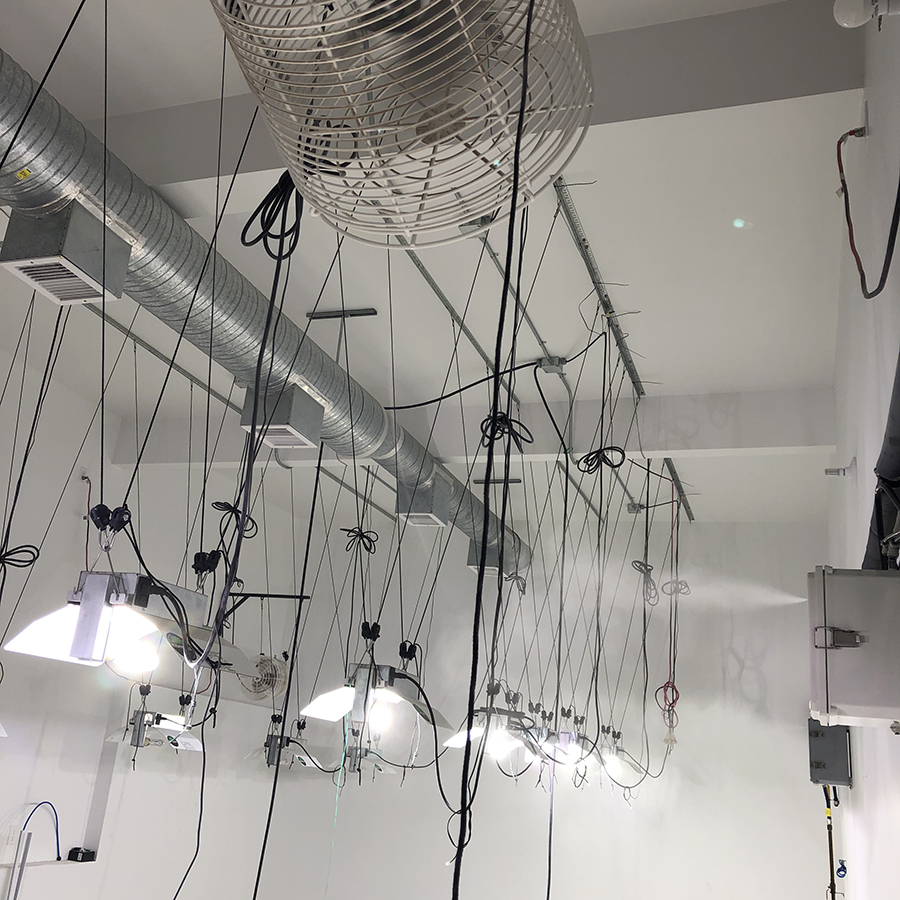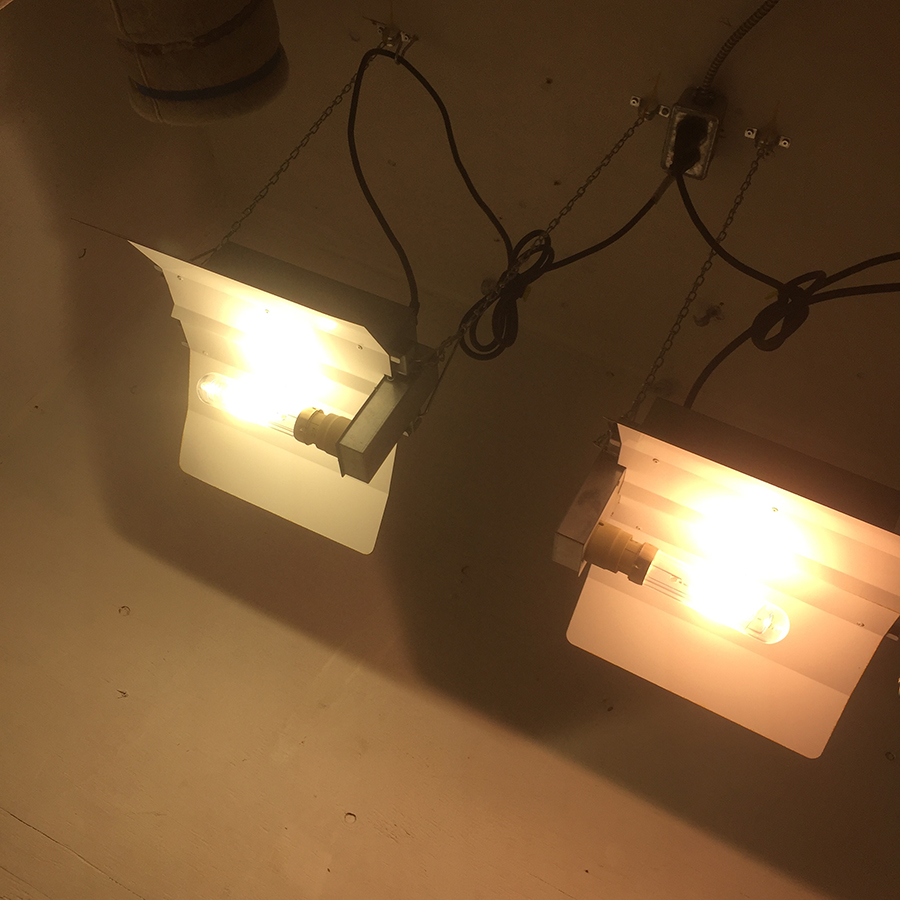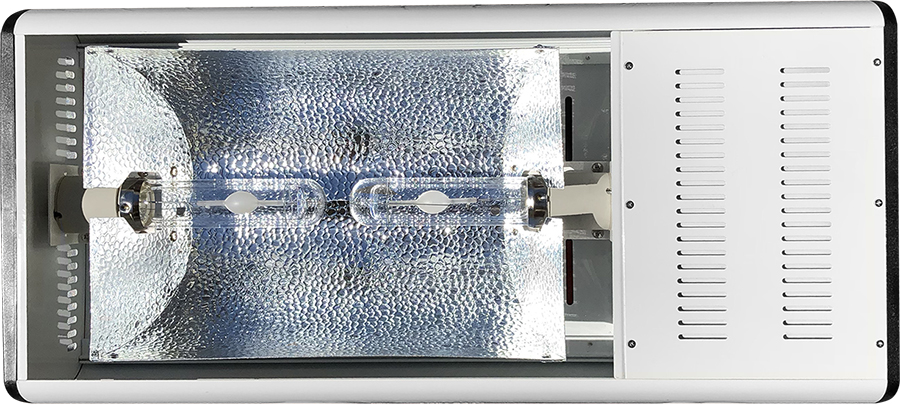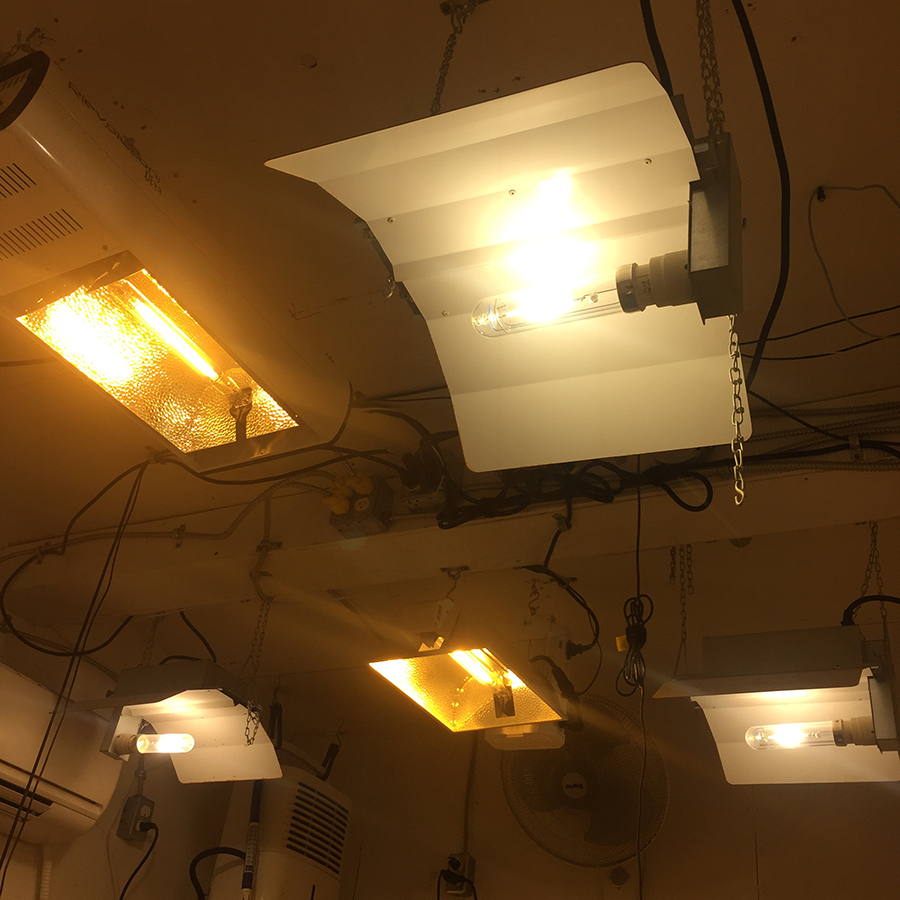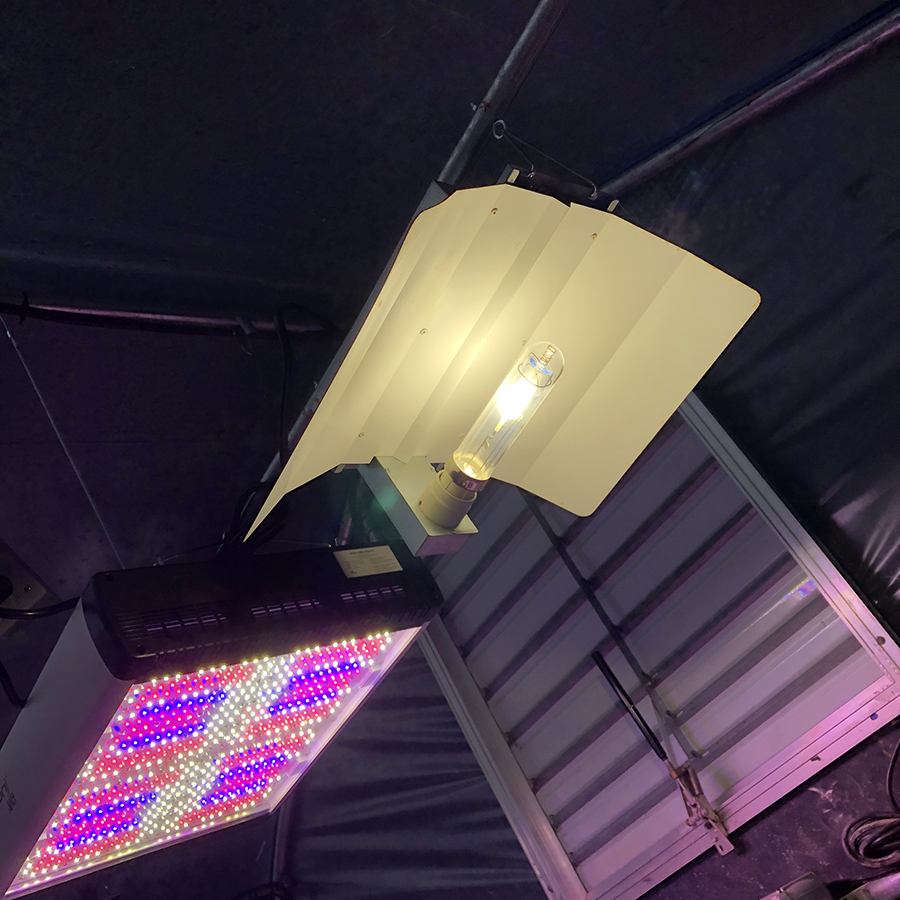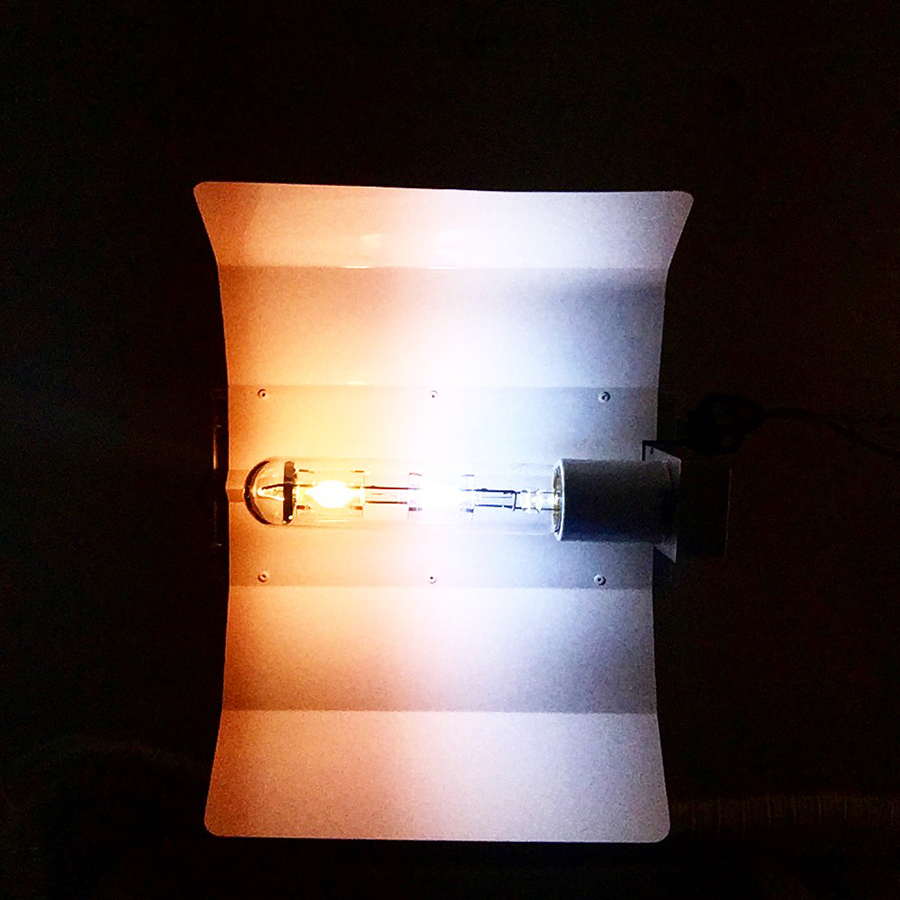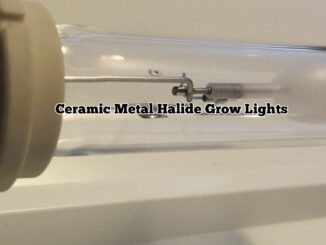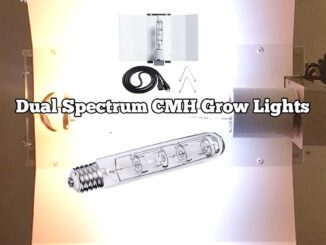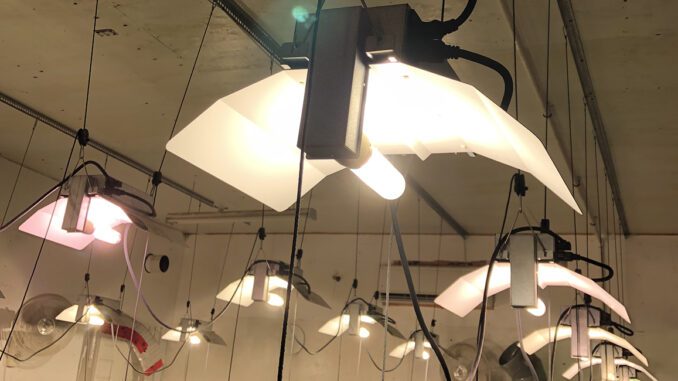
CMH Grow Lights
Ceramic Metal Halide Grow Lighting Guide
CMH grow lights have grown to become a well established and proven crop lighting choice for indoor growing or grow rooms. CMH (ceramic metal halide) or sometimes called LEC (light emitting ceramic) grow lighting systems are also now widely used as a source of supplemental greenhouse lighting.
Sometimes CMH grow lighting gets confused with MH (metal halide) grow lights, and while both are considered full spectrum sources of HID (high intensity discharge) crop lighting, they are in fact different and distinct. The spectrum emitted by CMH lighting sources intended for crop production is significantly better for photosynthesis and CMH lighting systems typically produce more light for growth (PPFD, photon flux density) per watt of electricity consumed.
Above: Summit-Lighting SUM315 CMH grow lights, daisy chained for easy install.
[quote]In grow lighting set ups where there is more than one source of light, the spots where lighting from one source overlaps with another is something worth understanding and taking advantage of.[/quote]
Of further benefit to growers is the fact that CMH grow lights emit some levels of UV (ultra violet) light wavelengths in sufficient quantity to supplement crop growth. Additions of UV are not essential in producing plant growth, although there are noticeable improvements in crop quality observed including flower density and essential oil production.
Above: higher Kelvin rated CMH lamp (left) versus lower Kelvin rated CMH lamp (right)
CMH grow lights come in a variety of wattages with the 315 watt lamp types being most common. Some manufacturers promote “630 watt fixtures” or greater, however, these typically contain multiple 315 watt lamps in the fixture or multiple 315 watt arc tubes within the same glass lamp. Also note that smaller wattages such as 175 watt CMH fixtures are available and have proven practical for smaller scale gardens or for use as supplemental lighting.
Above: DEva 615 watt CMH grow light
Selecting the right wattage CMH grow light for your plant cultivation application and the correct number of fixtures for a given area requires some careful consideration as it can be a significant investment. Replacing HPS lighting or blending your existing HPS lighting with full spectrum CMH grow lights is a proven choice for reducing power bills and improving crop quality.
The following recommendations for indoor growing (ie, sole light source) are based on years of practical use in the field as well as feedback and input form a variety of growers, both on commercial and hobby scales.
Vegetative Growth
1-315 watt CMH fixtures covers 4′ X 4′ area with a mounting height of 36″ above the plant canopy
1-175 watt CMH fixture covers a 3′ X 3′ area with a mounting height of 24″ above the plant canopy
Flowering, Fruiting & Reproductive Growth
1-630 watt CMH fixture covers 4′ X 4′ area with a mounting height of 36″ above the plant canopy
1-315 watt CMH fixture covers 3′ X 3′ area with a mounting height of 30″ above the plant canopy
1-175 watt CMH fixture covers 2′ X 2′ area with a mounting height of 16″ above the plant canopy.
Notes:
The above recommendations are established guidelines, however, different fixtures, lamp brands, applications, plant types, and other variations can play a factor in determining where the “sweet spot” for your particular set up will be. PPFD light meters are affordable and accessible and are a worthwhile purchase in helping the grower get the most from their grow light systems and the power they consume to operate them.
Combining CMH Grow Lights with Other Sources Like HPS
When lighting larger areas, using multiple sources of crop lighting is often a requirement to provide sufficient coverage to a given area. In doing so, some growers will retro fit CMH grow lights to their existing HPS (high pressure sodium) lighting arrangement or choose to include a ratio of CMH fixtures to HPS fixtures in new crop lighting grid installations. In grow lighting set ups where there is more than one source of light, the spots where lighting from one source overlaps with another is something worth understanding and taking advantage of.
Above: Mixed CMH and DE HPS lighting in a sealed hobby grow room
It is possible to stretch the distance at how often fixtures need to be spaced in a given area when using multiple fixtures versus single fixture gardens. There is expensive computer software that can make these assessments, but typically a good working rule of thumb is that you can add an extra half a foot around your lighting area covered when accounting for overlap between multiple fixtures, all things remaining equal. For example, if normally covering a 4′ X 4′ area with a single fixture, when using Four or more fixtures, each fixture can now cover 4.5′ X 4.5′ because of the overlap or “bleed” that will occur on the outer edges of light foot print produced by each lighting fixture or “lumiere”.
Adding CMH grow lights to other sources of grow lighting is not just limited to HPS, for example LED growers can also benefit from addition of full spectrum CMH lighting to add more blue wavelengths, some red and a healthy dose of plant usable UV wavelengths to the mix.
A “checkerboard” pattern is a common method used to install mixed grow lighting, ie alternating one light source type with another in a checkered pattern. However there are some considerations to be aware of in doing so:
-DE (double ended, high output) HPS and CMH grow lights will have different mounting heights; caution must be taken that a lower hanging fixture is not blocking light from a higher hanging fixture
-CMH grow lights may not have the same sized coverage area versus DE HPS fixtures; this spacing should also be taken into consideration in creating a crop lighting grid.
NOTE: Generally speaking, you don’t need to blast plants with CMH grow lighting as intensely as with HPS to get similar results. CMH grow lights, watt per watt, cary more usable energy for growth and flowering. Coupled with the UV levels they emit, it’s OK to have them a little further away from plants–crop growth and flowers typically remain tight versus stretching as with HPS lighting when it is not being delivered from an optimal distance from the plant canopy.
Dual Element CMH Grow Lights
Dural element CMH grow lights, while not common, are a great choice in delivering a well tailored spectrum for growth or bloom using CMH technology. At Grozine.com we have had two such units running in the field for around two years at the time of this writing and have been thoroughly impressed with the results. In short, these lighting systems combine two 175 watt CMH arc tubes of different Kelvin (light temperature) ratings in the same lamp.
Since the light source(s) originate within an inch or so from each other, by the time the light is reflected from the lumiere grow light fixture back down to the plant canopy, the colors have throughly blended. In this fashion, a better spectrum for growth or flowering can be achieved versus standard agro type CMH grow lamps. Note that a special system is required to operate such lamps. For more Information on Dual Element CMH Grow Lights Click | HERE |

